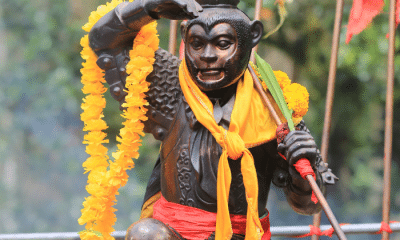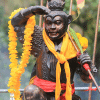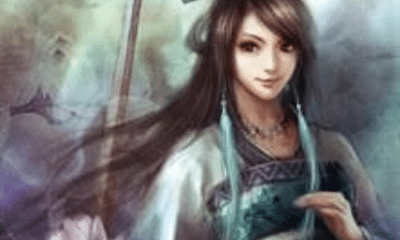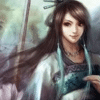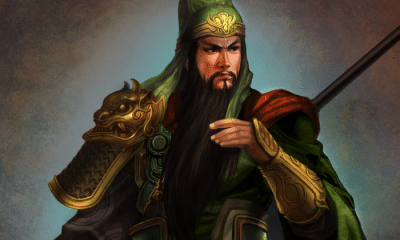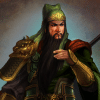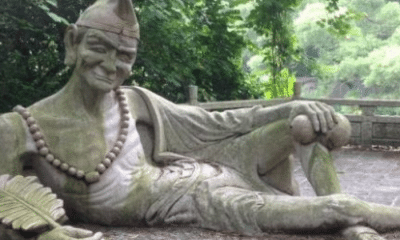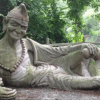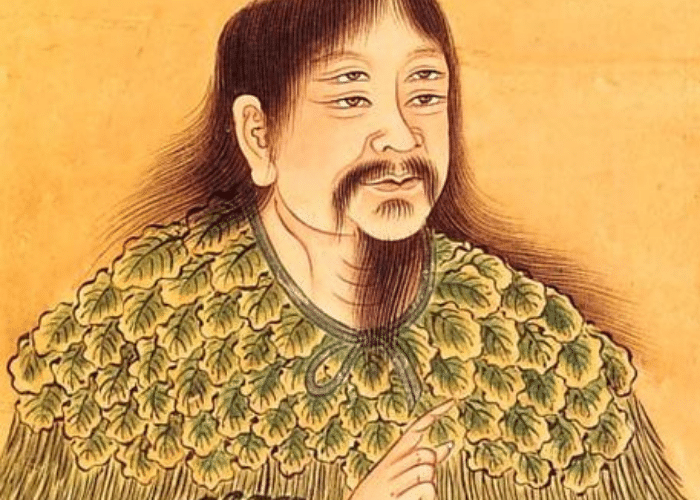
Chinese
How Cangjie Invented Writing
How Cangjie Invented Writing
In the long history of Chinese culture, one invention stands out as a uniquely ingenious and important solution to a serious problem. Keep reading to find out how Cangjie changed Chinese culture by creating its system of writing.
The Hanzi, or Chinese characters, are recognized as one of the world’s most complex writing systems. Thousands of individual characters are used to express words and phrases instead of phonics.
The Hanzi, however, was not created to be a concise and simple method of writing. The very legend of their creation emphasizes the ability of the Hanzi to express what is unique about everything in the world.
The legendary creator of the Hanzi was inspired by nature to solve a problem of culture. Tasked with creating a way to record matters of the Yellow Emperor’s court, Cangjie used his amazing observational skills to capture the variety he saw in nature.
Modern history shows that the characters were not invented in one act of creation like the legend says. There is still some truth, however, deep within the legend of Cangjie.
Cangjie and the Creation of the Characters
According to Chinese legends, the land was first ruled by Three Emperors and Five Sovereigns. One of these, the Yellow Emperor, was the first to unify the land.
The Yellow Emperor, however, had trouble administering his land. The records, laws, and finances of such a vast empire were almost impossible to track.
The Emperor had been using a system of knotted ropes to record such things, but this was unwieldy and ineffective. Desperate to find a way to record things in more detail, he turned to his court historian for advice.
The court historian was a man named Cangjie.
Cangjie was well-suited for the job of historian because he was especially observant. He was born with two sets of eyes, allowing him to see twice as much as any other man.
Despite his awareness of what happened at court, however, Cangjie was puzzled by the Emperor’s request.
To clear his mind, he sat on the banks of a river. After hours of contemplation, he had yet to think of an effective way of recording information.
The hours turned into days, and still Cangjie thought of nothing. After several days, his thoughts were interrupted by a phoenix flying overhead.
The bird dropped something in front of Cangjie. He recognized the mark it left as a hoofprint, but he could not tell what kind of animal it belonged to.
Distracted by this new puzzle, Cangjie sought out a hunter to identify the mark. The hunter quickly identified the hoofprint as that of a Pixiu, a mythical winged beast.
When Cangjie asked how the hunter could be so sure, the man told him that it was obvious. The print of a Pixiu was like that of no other creature. Any animal could be identified by the unique marks it left behind.
This gave Cangjie an idea. If he could capture a way to represent the unique properties of everything on earth, he could use those representations to keep the Emperor’s records.
From that day on, Cangjie paid special attention to the characteristics that made each thing unique and identifiable. He looked at the sun and moon, every living creature, and every element of the landscape.
He began to develop marks that represented these things on paper. Before long, he was able to present the Emperor with a complete list of characters that represented every idea possible.
The Emperor was overjoyed with the new system and immediately worked to learn the new characters.
The gods were impressed with Cangjie, as well. When they discovered his invention every god wept tears of joy and the sky rained millet.
Demons and ghosts, meanwhile, wept in despair. They knew that once humans could write, it would be harder to trick and deceive them.
The Yellow Emperor called together the premiers of each of the nine provinces of China so that they could learn to read and write the characters. Soon, every learned person in the Empire could read and write.
Temples were erected in Cangjie’s honor on the site where he had first seen the hoofprint of the Pixiu. His descendants were given the name Shi, “Historian,” so that no one would ever forget Cangjie’s importance.
My Modern Interpretation
The story of Cangjie is a legendary version of how the Chinese writing system was created, but there is some truth buried in the myth.
The Hanzi, or characters of the Han, developed from a pictographic system that may be as old as the legend claims. While the earliest confirmed script dates from the Shang Dynasty, around 1200 BC, symbols that may predate this system can be found from as early as the 6th millennium BC.
The so-called oracle bones of the Shang period demonstrate a well-developed and wide-used system of pictographic characters that had evolved beyond rudimentary symbols. This tells historians that the characters likely originated before this period, possibly almost to the supposed time of the Yellow Emperor a thousand years earlier.
These bones may also reflect another truth found in the legend of Cangjie.
A lesser-known variation of the story says that the historian was inspired not by a hoofprint, but by the distinct veins on the shells of different turtles. Archaeologists have found many turtle shells with early forms of writing on them, showing that this story may have been rooted in history.
While the calligraphy of later clerics would not be created for several hundred years, writings from China in the 1st millennium BC are recognizable as a character-based script. As in the story of Cangjie, however, evidence can always be found of the representational roots of the Hanzi.
In modern Chinese Hanzi, for example, words having to do with houses are usually enclosed in a box. This represents the walls that enclosed and protected traditional Chinese homes and settlements.
Unlike the story, however, historians can clearly see that the development of Chinese characters did not take place all at once. Additionally, they can tell that for much of China’s history, there was no single writing system.
Characters and the way they were written differed by region even in the Han period, which was supposedly a period of cultural unity. The process of creating a unified, agreed-upon system of writing took much longer than the myth of Cangjie suggests.
A universal cursive script did not exist until at least the second century AD, long after the supposed life of Cangjie.
Cangjie can therefore not be interpreted as a single historical figure. Instead, he is a culture hero whose story reflects part of the development of China’s complex writing system.
While modern people know that Cangjie was not the literal inventor of writing, his name lives on in the creation of characters. Today, people recognize Cangjie as the name of the system for inputting Chinese characters into a computer using a standard keyboard.
In Summary
In Chinese folklore, Cangjie was the court historian of the Yellow Emperor. With four eyes and a keen mind, he noted everything that happened at court.
When given the task of how to record the matters of court, however, Cangjie struggled to find a solution. Eventually, learning how a hunter used unique characteristics to identify an animal’s hoofprint, Cangjie was inspired to observe the natural world for solutions.
By paying attention to everything he saw, Cangjie was able to identify what made everything in the world unique from any other thing. He began to illustrate these differences, creating the first written system of Chinese characters.
Archaeologists and historians now know that the development of Chinese characters was not as simple as the legend of Cangjie makes out. The current Hanzi evolved over thousands of years from a variety of local methods.
There is some truth, however, to Cangjie’s story.
The modern characters and their predecessors evolved from pictographic writing that used images to represent identifiable characteristics. While the current characters bear little resemblance to the simple drawings of early pictograms, some still show identifiers from images of the past.
Today, Cangjie’s name remains connected to a new method of writing Chinese characters. The Cangjie method allows millions of people to input the Hanzi into computers using a standard keyboard.


